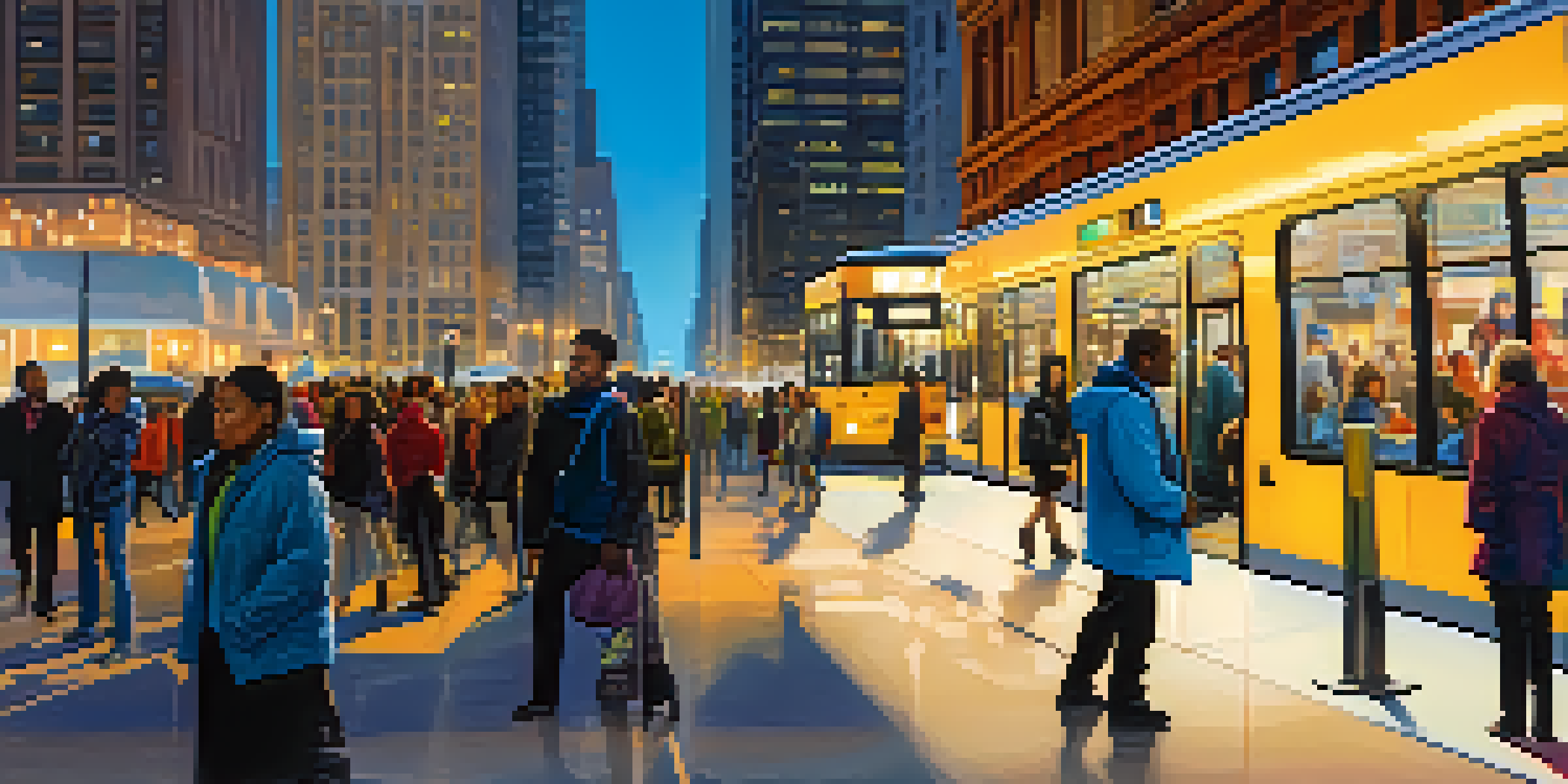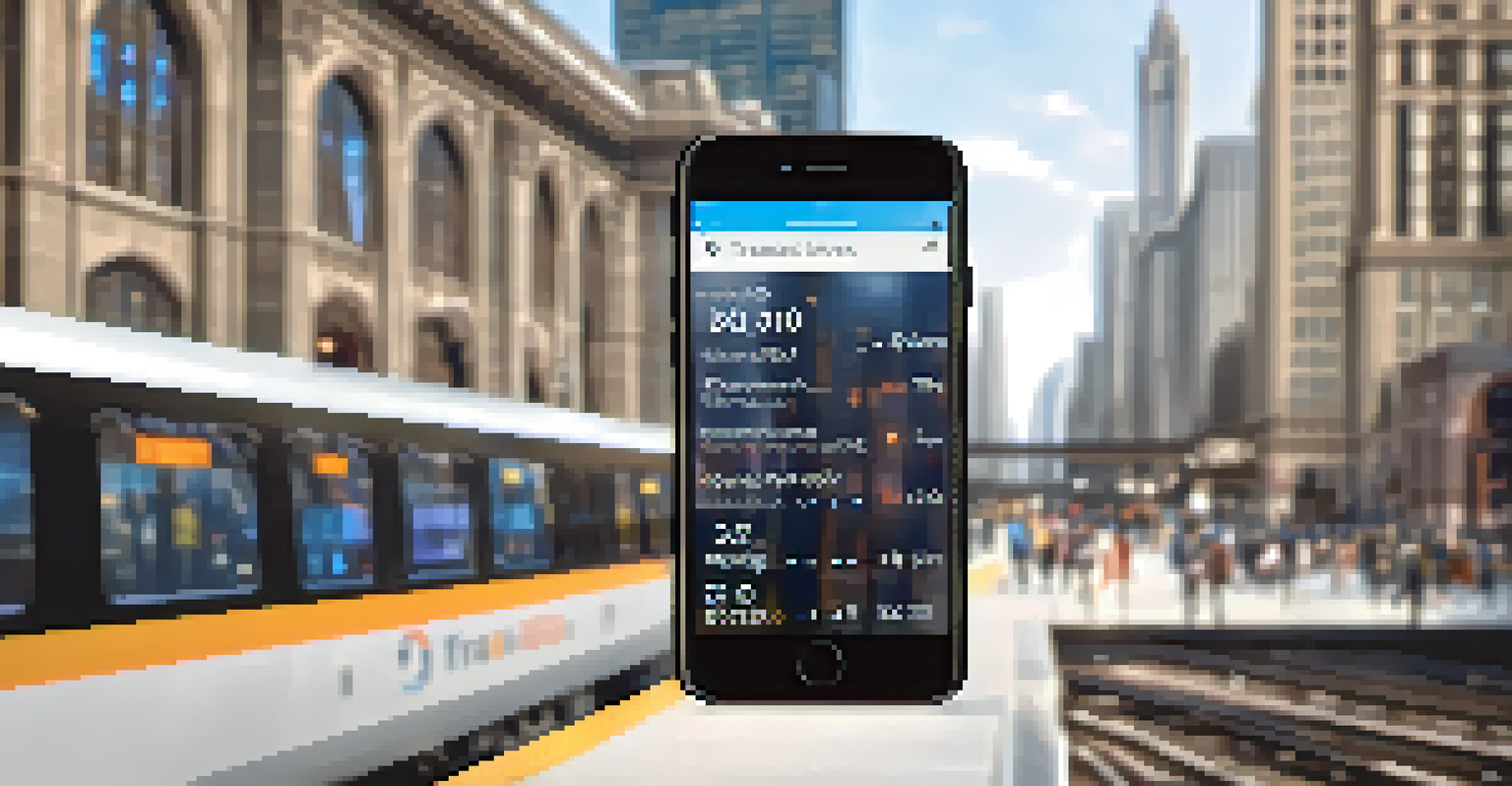Chicago Transit Apps: Tools for Navigating the City

Why Use Transit Apps for Chicago Navigation?
Navigating a bustling city like Chicago can be daunting, but transit apps make it a breeze. With real-time updates and route options, these apps empower you to make informed decisions on the go. Whether you're a tourist or a local, having the right tools can save you time and reduce stress.
The world is a book, and those who do not travel read only one page.
Imagine standing at a bus stop, unsure if your ride is coming soon. A transit app can tell you exactly when the next bus will arrive, allowing you to plan your day more efficiently. This convenience is especially beneficial during peak hours when traffic can be unpredictable.
Moreover, transit apps often provide alternative routes, helping you avoid delays or crowded areas. They can suggest the fastest options to get from point A to B, ensuring you spend less time commuting and more time enjoying the city.
Top Chicago Transit Apps to Consider
There are several transit apps specifically designed to enhance your Chicago travel experience. One of the most popular is the Chicago Transit Authority's official app, which provides real-time information on trains and buses across the city. It’s a reliable resource that locals and tourists alike turn to for accurate transit updates.

Another excellent option is Google Maps, which not only offers driving directions but also integrates public transportation routes seamlessly. You can easily switch between driving, walking, and transit options to find the best way to reach your destination.
Transit Apps Simplify Navigation
Transit apps provide real-time updates and route options, making it easier for users to navigate Chicago efficiently.
If you're looking for something more specialized, consider the Transit app. This user-friendly tool focuses on public transport and provides live departure times, trip planning features, and alerts for service changes. It's a great companion for anyone relying on Chicago's extensive transit network.
Features to Look for in Transit Apps
When choosing a transit app, look for features that enhance your travel experience. Real-time tracking is crucial, as it provides live information about bus and train arrivals. This feature can significantly reduce wait times and help you plan your next moves more effectively.
Good public transportation is the backbone of a great city.
Another important aspect is a user-friendly interface. An app that is easy to navigate can make a big difference when you’re rushing to catch a train. Intuitive designs allow users to focus on getting to their destination rather than fumbling through confusing menus.
Lastly, check if the app offers offline functionality. This can be a lifesaver if you're in an area with poor reception or if you simply want to save on data usage. Having access to maps and schedules offline ensures you’re never stranded without information.
How to Make the Most of Your Transit App
To truly benefit from your transit app, take a moment to explore all its features. Many apps offer personalized settings, allowing you to set favorite routes or receive alerts for service disruptions. Customizing your experience can streamline your daily commutes and travel plans.
Additionally, consider planning your trips ahead of time. Most apps allow you to input your starting point and destination, which helps you visualize your route and familiarize yourself with the transit system. This is particularly useful for first-time users or those unfamiliar with the city.
Key Features Enhance User Experience
Look for features like real-time tracking, user-friendly interfaces, and offline functionality to improve your transit experience.
Lastly, don’t forget to stay updated on any app improvements or new features. Developers frequently enhance their apps based on user feedback, so keeping your app up-to-date ensures you’re reaping the full benefits of its capabilities.
Safety Tips While Using Transit Apps
While transit apps are incredibly helpful, safety should always be a priority. When using these apps, be aware of your surroundings, especially when waiting at stops or stations. Avoid getting too engrossed in your phone to the point that you lose track of your environment.
Consider sharing your travel plans with a friend or family member. Many apps allow you to share your location or estimated arrival times, which can be especially reassuring when traveling alone, particularly at night.
Lastly, trust your instincts. If something feels off about a route or location suggested by the app, don’t hesitate to change your plans. Your safety is paramount, and there are always alternative routes or transport options available.
Integrating Transit Apps with Other Tools
Transit apps can be even more effective when used alongside other tools. For instance, integrating your transit app with a calendar can help you manage your schedule better. By setting reminders for departures, you can ensure that you never miss an important appointment or meeting.
Additionally, consider using ride-sharing apps in conjunction with transit apps. If you find yourself in a situation where public transportation isn’t the most efficient option, ride-sharing services can provide a convenient alternative. This combination offers flexibility in your travel choices.
Future Trends in Transit Apps
Expect advancements like AI personalization and multimodal integration to enhance travel options and accessibility in Chicago.
Lastly, don't forget to leverage social media. Many transit apps have social media integration, allowing you to check for updates or read about others' experiences. Engaging with your community can provide insights and tips that enhance your overall navigation experience.
Future Trends in Transit Apps for Chicago
As technology continues to evolve, so do transit apps. In the future, we can expect even more personalized experiences through machine learning and AI. These advancements will allow apps to learn user preferences over time, suggesting routes and travel times that match individual habits.
Additionally, enhanced integration with other transportation modes, such as bike-sharing programs and electric scooters, is on the horizon. This multimodal approach will make it easier for users to find the best combination of transport options for their needs, promoting a more sustainable urban environment.

Lastly, increased focus on accessibility will likely be a major trend. As cities become more inclusive, transit apps will continue to adapt to serve all users, ensuring that everyone can navigate Chicago's transit system with ease and confidence.